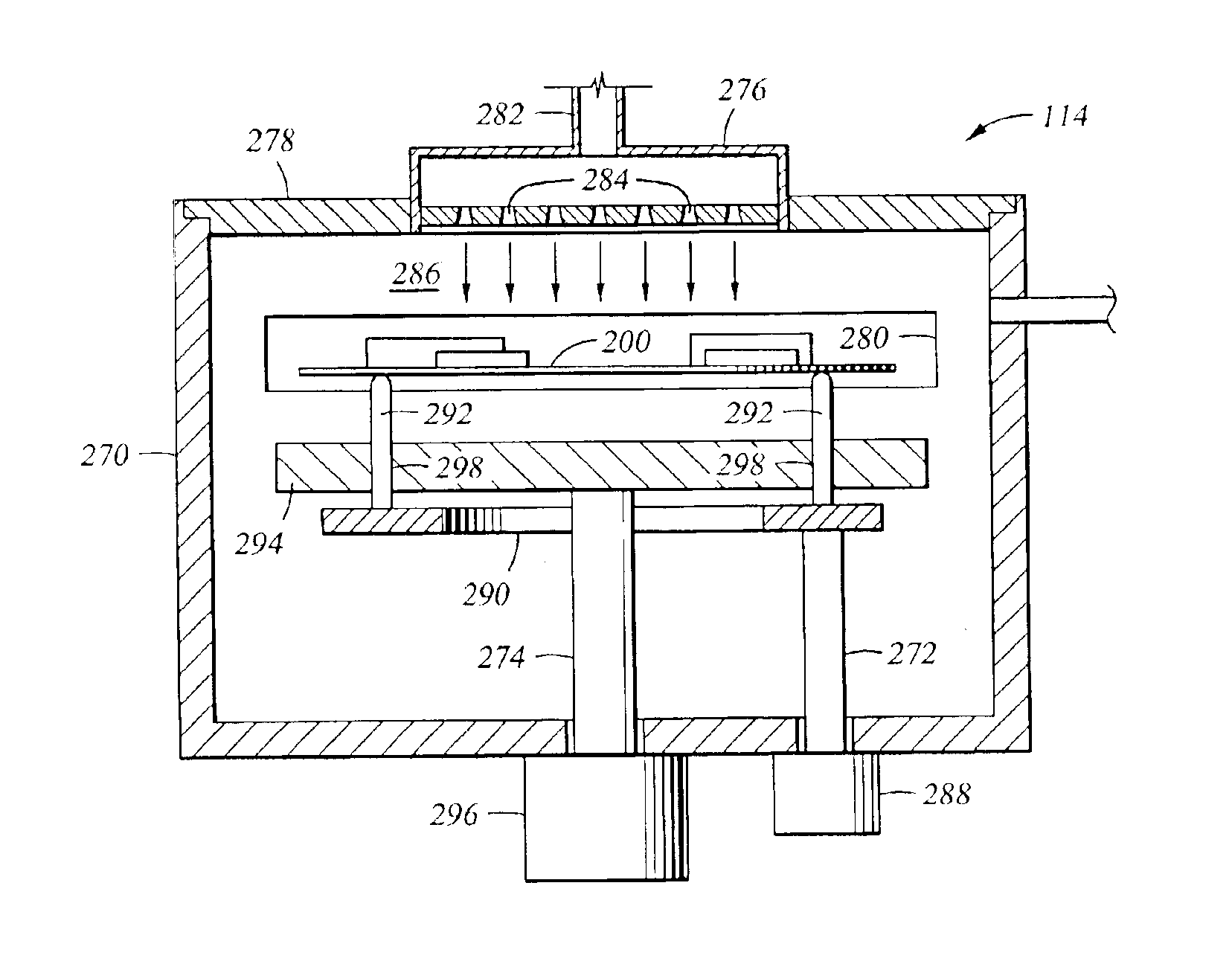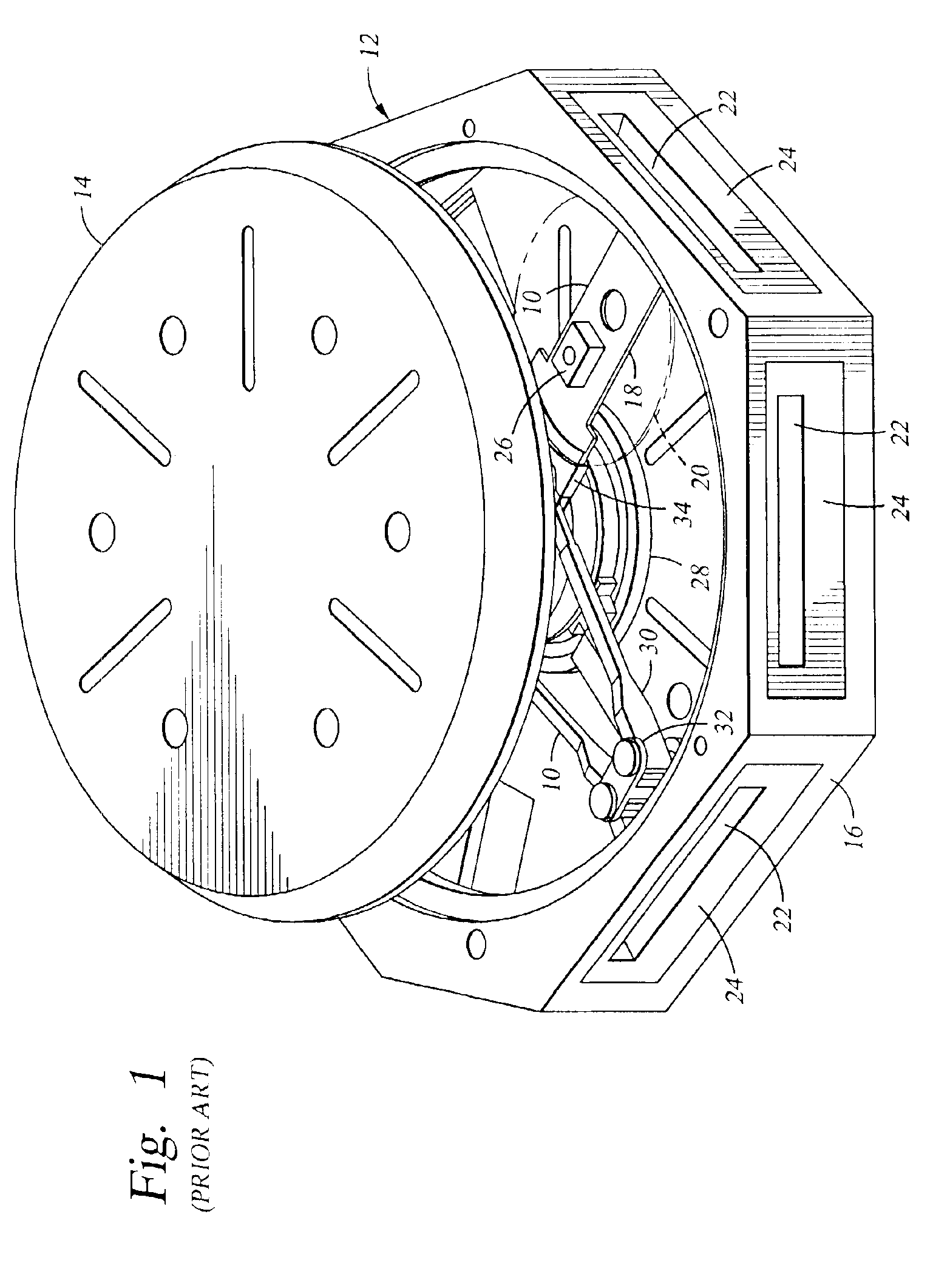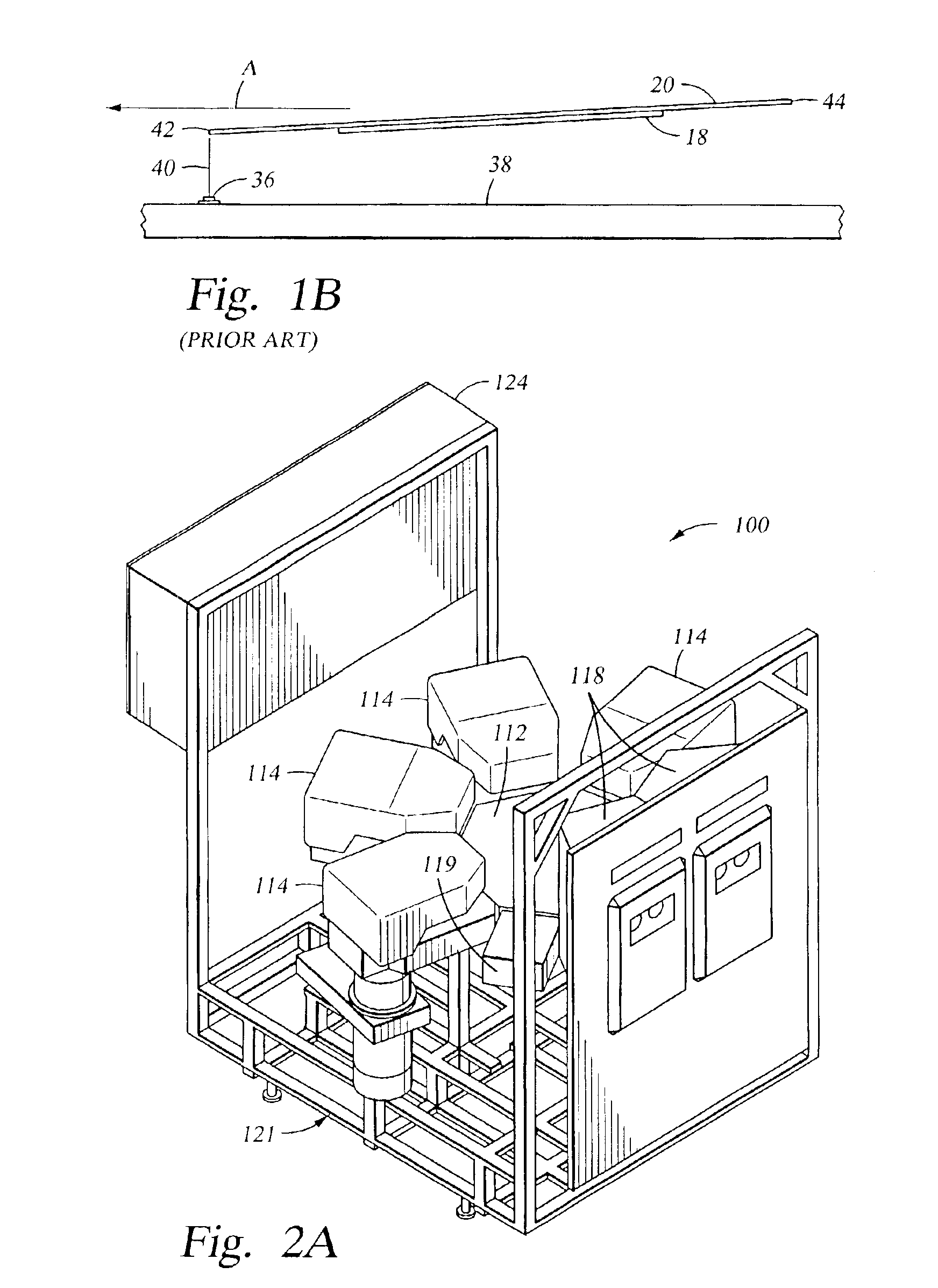Sensor device for non-intrusive diagnosis of a semiconductor processing system
a sensor device and processing system technology, applied in semiconductor/solid-state device testing/measurement, conveyors, instruments, etc., can solve the problems of reducing the throughput of the processing system, affecting the quality of the substrate, so as to achieve the effect of cost saving and light weigh
- Summary
- Abstract
- Description
- Claims
- Application Information
AI Technical Summary
Benefits of technology
Problems solved by technology
Method used
Image
Examples
Embodiment Construction
[0031]FIGS. 2a and 2b show two configurations for an exemplary processing system 100 of the present invention. The processing system 100 is typically disposed in a clean environment of a manufacturing facility. The processing system 100 and an example of its function will be described in detail below. Generally, the processing system 100 includes a central transfer chamber 112, one or more process chambers 114, one or more load lock chambers 118, one or more expansion or cool-down chambers 119, a platform frame 121, a gas panel 124 and an optional external substrate handling system 120, referred to herein as the mini-environment. Some of the processes that a processing system 100 may perform on a substrate, or wafer, in the process chambers 114 require the use of process fluids and / or gases, so the process chambers 114 have fluid lines (not shown) for delivering the process fluids and / or gases to the process chambers 114 from the gas panel 124. A transfer chamber substrate handler, ...
PUM
| Property | Measurement | Unit |
|---|---|---|
| Temperature | aaaaa | aaaaa |
| Length | aaaaa | aaaaa |
| Optical properties | aaaaa | aaaaa |
Abstract
Description
Claims
Application Information
 Login to View More
Login to View More - R&D
- Intellectual Property
- Life Sciences
- Materials
- Tech Scout
- Unparalleled Data Quality
- Higher Quality Content
- 60% Fewer Hallucinations
Browse by: Latest US Patents, China's latest patents, Technical Efficacy Thesaurus, Application Domain, Technology Topic, Popular Technical Reports.
© 2025 PatSnap. All rights reserved.Legal|Privacy policy|Modern Slavery Act Transparency Statement|Sitemap|About US| Contact US: help@patsnap.com



